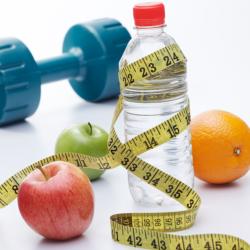A workout is the combination of exercises that you do in a single session. And remember that you can’t (and shouldn’t) do the same workouts every day. Strength training involves tearing muscle fibers, so that means you need rest periods for each muscle group so that they can rebuild into bigger and stronger muscles.
So, you should exercise two or three times a week, but not on consecutive days. Your muscles will need at least 48 hours to rest and repair before they can grow. If you’re not doing a full body workout, you can focus on different muscle groups.
Before anything else, makes sure that it’s safe for you to work out. There are many possible reasons why you should refrain from strength training, but it boils down to one thing: if you don’t feel well, don’t force yourself. If you’re feeling tired or experiencing some pain, strength training workouts may do more harm than good.
Always listen to what your body is telling you.
Next, make sure you have your equipment handy. Strength training requires a few bits of equipment beyond a good pair of shoes and comfortable clothes. That may be good enough for jogging, but not for strength training workouts. To begin with, you’ll need ample space, perhaps a chair without arms and one that doesn’t rock, barbells and dumbbells, and maybe even some sort of special training balls.
Gauging the Intensity of Your Strength Training Workouts
Once you get into your exercises, you need to determine the right intensity for you. You need to progress to increase your strength, and at the same time you need to be careful that you don’t injure yourself by trying too hard. Go for light weights at first, and then increase as you become accustomed to each weight.
Watching others do a strength training workout session such as in the video below can be very helpful.
You also need to track your reps (repetitions of doing a certain exercise). For example, if you cannot complete two sets of 10 reps in good form, reduce the weight until you can lift it properly for 10 reps. Rest for a minute or two, and then do another set. When you can do 10 reps and you need to rest because the weight is too heavy after ten reps, then you’re working at the proper intensity. And if you can do twenty reps straight, this means you will need heavier weights next time.
Progression is essential if you want your strength training workouts to provide you with the maximum benefits. Continuously challenging your muscles is the key to strength training. To help you put your workout routine together, you can borrow our muscle building training series on video (no cost) when you subscribe to the MyFitnessNut.com Newsletter.









